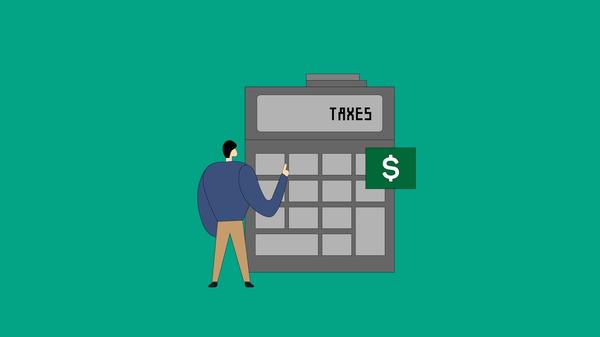Every year, you fear the tax season and want to gain as much professional help as you can, to ensure you do not lose a single dollar from your portfolio to unnecessary taxes.
You strive to be as tax efficient as possible with your finances.
But do you plan for your investments to be tax-efficient?
What is Tax Efficiency?
Tax efficiency involves structuring your portfolio investments to minimize taxation. Minimizing tax liability is a potential goal for any financial plan or investment.
To be tax-efficient, you should carefully structure your portfolio and financial plans. Some possible approaches you may know to minimize your taxable burden are listed below.
- Tax-Deferred Accounts: IRA, 401(k), or annuities are the most common type of tax-deferred accounts known to us. Any investment gains, dividend gains can continue to grow tax-free, making it an optimal choice for a tax-efficient investment. In addition, all contributions to tax-deferred accounts reduce the tax liability for the current financial year.
- Bond Investing: Bond investors often invest in municipal bonds because they are exempt from federal taxes, making a good addition to a tax-efficient portfolio.
- Tax-efficient Mutual Funds: There are a variety of mutual funds that offer lower tax rates relative to other funds, offering investors the ability to lower their tax bill and create a tax-efficient investment plan.
For this article, we will be focusing on tax efficiency related to buying a fund and understanding the tax efficiency ratio associated with funds in your portfolio.
If you're looking to make sure your investments are as tax-efficient as possible, one of the best ways to do this is by calculating your fund's Tax Efficiency Ratio (TER). This ratio compares the amount of taxes that you pay on the fund's income and capital gains to the total return of the fund. The higher the TER, the more tax efficient that particular fund is.
What is the Tax Efficiency Ratio?
If you have ever invested in mutual funds, you must be aware of the costs or fees associated with them. While investors often focus on the expense ratio of the fund, funds also have an associated tax management efficiency ratio.
The tax efficiency ratio, or tax management efficiency ratio and sometimes tax-cost ratio, of a fund measures what percentage of a fund's earnings are lost to taxation for a specific period. The purpose of every mutual fund is to earn more money for its investors, and if it fails at being tax-efficient, it could lose existing or potential investors. The "tax drag" can be significant and further diminishes post-tax investment returns.
Accordingly, investors seek funds that have high tax-efficiency as opposed to low tax-efficiency.
How to Calculate Tax Efficiency Ratio?
To calculate a fund's tax efficiency ratio, we need two attributes:
- The fund's annualized return
- Total taxes paid on distributions
For example, if a fund had a 5% tax efficiency ratio over a three-year period, it means that on average each year, investors in that fund lost 5% of their assets to taxes. If the fund had a three-year annualized pre-tax return of 12%, an investor in the fund took home around 7% on an after-tax basis.
The mathematical calculation for tax efficiency ratio is to divide tax-adjusted earnings by pre-tax earnings. The following formula can be used to calculate the tax efficiency ratio for a fund:
Tax Efficiency Ratio = ( 1 – ((1 + after-tax return) / (1 + pre-tax return)))) x 100 %
Let's take an example of fund ABC with an annual pre-tax return of 8% and an after-tax return of 7%. We can calculate the tax efficiency ratio using the formula above:
Tax Efficiency Ratio = ( 1 – ((1 + 0.07) / (1 + 0.08)))) x 100%
Tax Efficiency Ratio = 0.9 %
Why is the Tax Efficiency Ratio Important?
When an investor holds a single stock, they have to pay taxes on their holdings only in two scenarios – when the stock issues a dividend or when the investor decides to sell the stock for a profit. These are the only two taxable events when holding a single stock.
Tax efficiency ratio is an important factor to consider when investing in mutual funds. It helps you determine how much of your investment will be lost to taxes and how much income you can expect to keep. The higher the tax efficiency ratio, the more money you can keep in your pocket.
However, when investing in a mutual fund for your portfolio, the investor may incur taxes for simply holding on to the fund. This could be as a result of dividends received for stocks within the funds, interest payments for bonds, or capital gains from the sale of a stock.
Factors affecting Tax Efficiency
Several attributes of a mutual fund can impact its tax efficiency. Funds with a high level of turnover tend to be less efficient, whereas funds with a low level of turnover tend to have a high tax efficiency.
In addition, institutional funds tend to have higher tax efficiency as opposed to retail funds.
Are Mutual Funds Tax Efficient?
In general, mutual funds are not considered tax efficient. While some funds may be more efficient than others and a better fit for your portfolio, it is important to look at the tax efficiency ratio to compare different types of funds.
When compared to ETFs, mutual funds have a lower tax efficiency, because they are actively managed and have a high turnover rate of assets within the fund. A high turnover rate means more taxable events are occurring, incurring regular tax bills for the investor.
Unless a mutual fund is labeled ‘closed-end fund', mutual funds are generally open-ended schemes, allowing investors to buy and sell shares at any time. This flexibility can have a significant impact on the tax efficiency of the fund. If a large number of investors decide to sell their shares, the mutual fund manager will need to sell his positions to raise cash which could trigger a taxable event for anybody holding on to the fund.
What are the most Tax Efficient Fund Investments?
Investors may be able to reduce their tax liabilities by structuring their portfolio to invest in tax-efficient funds or setting up tax-advantaged income accounts.
One way to create tax-efficient funds through investing is in Exchange Traded Funds. ETFs that are based on equities are considered to be more tax-efficient in general than mutual funds for two reasons:
- ETFs tend to have a low turnover rate of holdings inside the fund
- ETFs are traded on the open market, thereby avoiding the scenario of selling positions to raise funds
ETFs typically follow a market index (such as the S&P 500) or a sector index, which would reduce the turnover rate of these types of funds compared to mutual funds. The only turnover of positions for index funds is when companies are added or removed from the underlying index.
Such types index funds prove to be more tax-efficient as compared to mutual funds and investors must choose this option if taxation is their major concern.
Furthermore, if ETFs are part of your strategy it's best to put them into taxable accounts and use the ETFs with low turnover rate to minimize the tax liability.
Investors should also bear in mind that any investments held in taxable accounts over a period will be subject to taxes, regardless of the type of fund. The main difference is the amount of taxes paid and when they are due. Investors holding ETFs within a taxable account may pay more taxes upfront but can enjoy a lower tax rate (as low as 0%) on any long-term capital gains.
Don't pay another dollar to unnecessary taxes
Create tax-efficient portfolios with Passiv's asset classes that assist investors to prioritize asset allocation to limit your tax implications.
Below is a list of various types of funds ranked by their tax-efficiency:
Most Tax-Efficient:
- Total US market stock index funds,
- Total international stock index funds,
- Value index funds,
- Low-yielding bonds or cash
Least Tax-Efficient:
- Balanced Funds,
- Active Stock funds,
- REIT funds,
- High-turnover active funds,
- High-yield bonds,
In conclusion, the tax efficiency ratio is one among many variables to be considered when making investment decisions. For investors seeking to create a balanced portfolio, diversifying your investments between taxable and tax-sheltered funds could be the simplest strategy.
Now that you know all about the tax efficiency ratio, take five minutes to read more articles on taxes and investing:
https://passiv.com/blog/a-guide-to-filing-taxes-married-but-separately/
https://passiv.com/blog/guide-to-rrsp-witholding-taxes/


